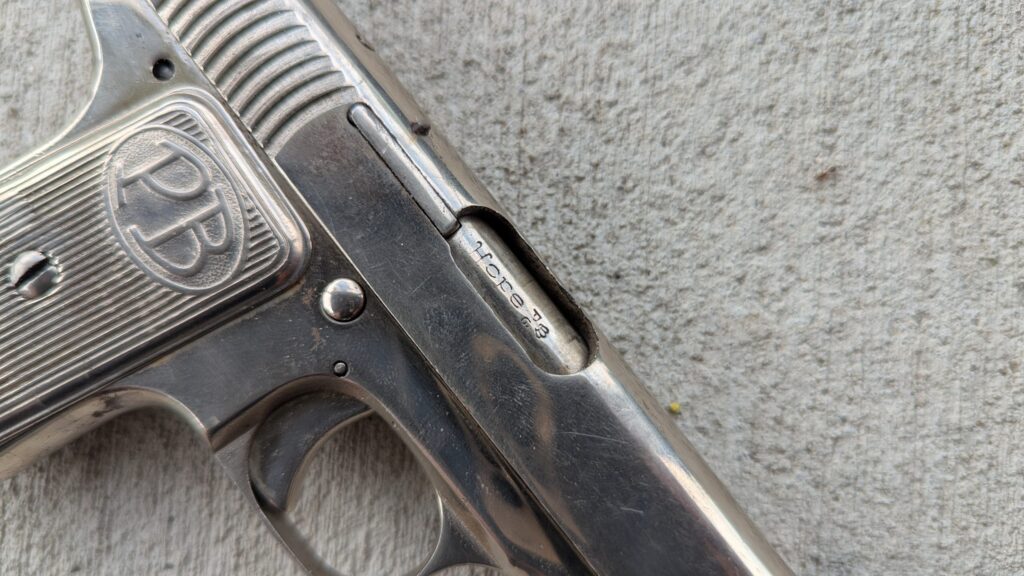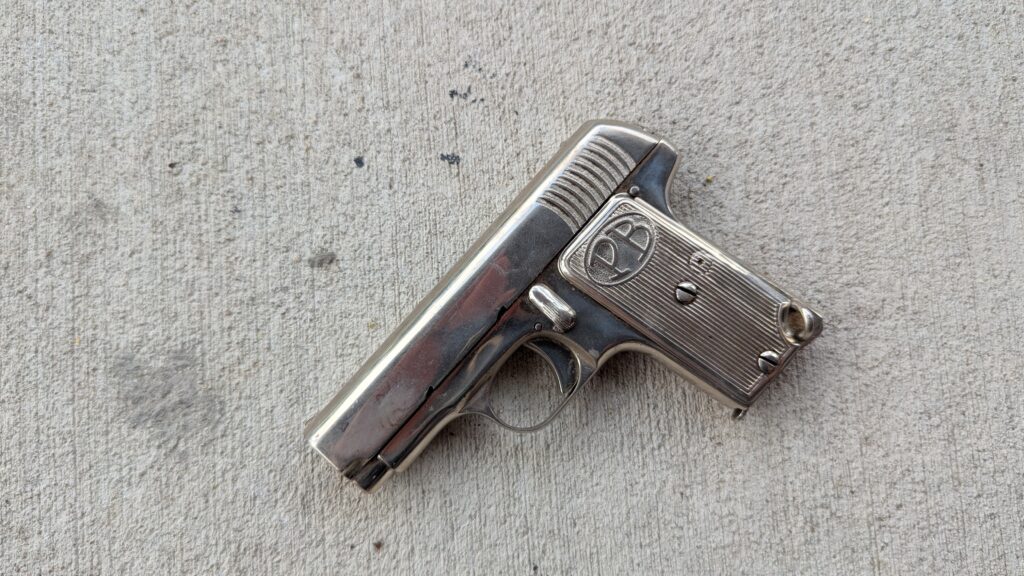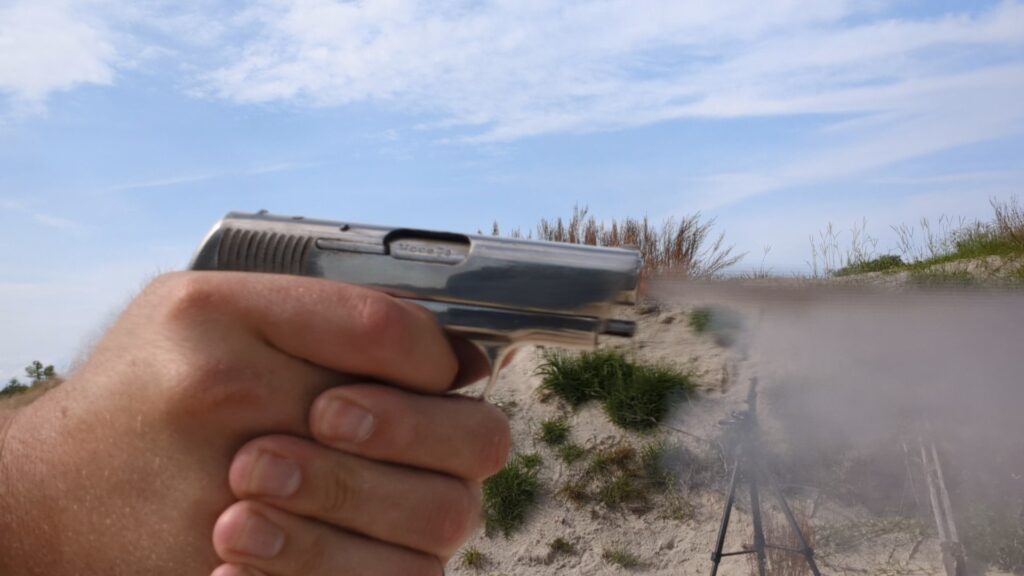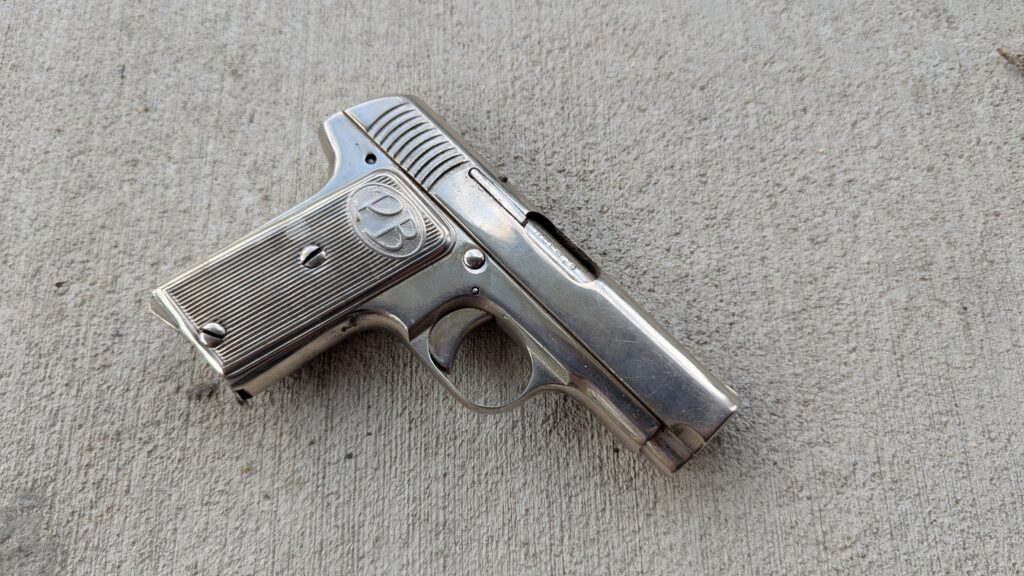The Astra Model 1916 Hope Pistol is an excellent example of Spanish handguns and Spanish handgun design. I love Spanish handgun design. It’s not because it’s been historically innovative; it’s because it’s been historically consistent. Modern Spanish handgun design started around World War I and followed a theme until Astra and Star shut their doors.
The Impetus of the Astra Model 1916 Hope
World War I propelled the Spanish arms industry by producing the Ruby pistols, which were clones of the Colt M1903 Pocket Hammerless. The Ruby pistols set the tone for Spanish firearm manufacturing for decades to follow. Spanish handgun design goes like this: Take a popular pistol, change a few things, boom, you’re done.

The Ruby wasn’t a direct clone. The Spanish made some changes, but they kept the enclosed single-action hammer and blowback action of the original Colt pistols. They extended the grip, increased the magazine capacity, used a straighter grip angle, and moved the safety and slide lock in front of the grip. They eliminated the grip safety and added a lanyard loop.
The Astra Model 1916 is part of the later generation of Ruby pistols. Esperanza y Unceta made somewhere close to a million of these guns and sold them as Astras, Brunswicks, and Victorias. Esperanza y Unceta later became Astra and remained Astra until it shut down.
The Astra Model 1916 Hope
The Astra Model 1916 pistols were the last generation of Ruby pistols produced for the French Military. After World War I, Spanish Arms makers kept producing these guns, and the Spanish famously used odd, often unexplainable names. Some of the Astra Model 1916s are called Hope and are designated by the word Hope on the chamber.

The Astra Model 1916 I have is a .32 ACP pistol, smaller than most Ruby pistols. It’s smaller than both the Ruby pistols and Colt M1903 Pocket Hammerless models. The gun has a seven-round magazine, the traditional Ruby safety, and a lanyard loop. In a very unmilitary-like fashion, it’s also nickel-coated, or appears to be. Who knows what the coating actually consists of?
This Astra Model 1916 isn’t to be confused with the Astra Model 1916 Hope, which is a Baby Browning copy in .25 ACP. Yeah, it gets a little confusing. These little guns were imported in mass quantities with all sorts of odd names attached. It seems like Astra used the Family Guy idea of naming guns and let manatees do it.

The heel magazine release is normal for the era. What’s weird is that the magazine has a second cutout that allows it to stop about two-thirds after it has been inserted. This prevents the magazine from reaching a feeding position. I can only assume this cut was for military purposes, so the magazine sticks with the gun, but the user can ensure it’s unloaded.
Shooting Astra Model 1916 Hope
I love shooting the Astra Model 1916, Hope, and similar old-school .32 ACPs. They tend to be very pleasant to shoot, with soft recoil. These guns are small, easy to operate, and have a historical edge. The Model 1916 barely moves between shots; it’s downright cute and handles quite nicely.

It seems like Astra entered a contest to put the absolute smallest sights possible on the Astra Model 1916. They are barely present. The shiny finish makes them difficult to use, with the sun reflecting off them. It’s a bit of guesswork to figure out where you will hit. It’s one of the few guns I’ll accept the old “You won’t see your sights in a gunfight!” saying.
I can’t see the sights at the flat range. Using an FBI Q target at seven yards, I point-shot my way through a few magazines. Accuracy is fine. If the gun had real sights, it might prove to be quite accurate. At seven yards, I could point-shoot for headshots. The lack of recoil makes it easy to shoot quickly.

In fact, the most fun I had was shooting with a one-handed shooting style that was typical of WWI officers. Body bladed, arm straight, firing the gun with the determined attitude of a French officer. The Model 1916 would be a solid carry gun in the post-Great War world. It hides with ease, and it’s slick and smooth for easy carry.
The Modern Era
Tons of these Ruby pistols were produced. Knowing if one was a World War I-issued gun is close to impossible. By the shiny finish, I can assume this wasn’t a military pistol. As a Ruby collector, I can attest to their rock-bottom price point. The post-war Ruby pistols are even cheaper, and I bought this one for $120 at an auction.

The Spanish Ruby pistols are a great way to start if you want to collect old guns. I imagine that, like all things surplus, the price will rise, and even pistols like the Hope will be less obtainable. Plus, they tend to be fun shooters and are far from safe queens.
Read the full article here











